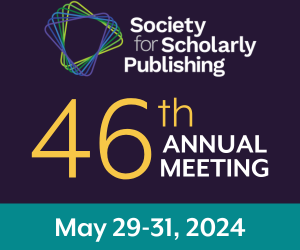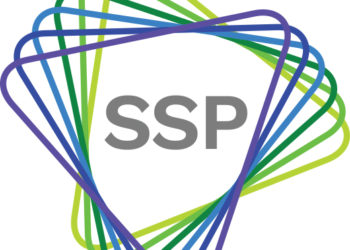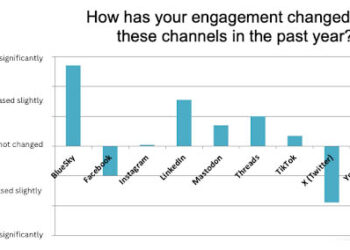
- Image by quinn.anya via Flickr
The machines of scholarly research and content dissemination require monetary input at some point(s) in the process in order to run. Despite this reality, many mission-driven organizations are uncomfortable acting as (or, in some cases, are ill-suited to be) commercial survivors.
Quoting Joe Esposito’s comment to Phil Davis’ recent post on OA competition between PLOS and Nature:
What fascinates me is that the governing boards of prestigious journals are interfering with the necessary moves to counter these developments. Author-pays open access is growing in strength but conservative boards do not always understand the competitive circumstances that their operating staff bring to their attention.
On popular industry listservs, commercial publishers and vendors are cast as thousand-pound gorillas who use money and influence without regard for long-term industry impact — who prioritize profit and business strategies over quality and mission, and hold patrons hostage with high prices that marginalize opportunities for smaller businesses.
Open access publishing models, long the darlings of the defiantly non-commercial, are increasingly vulnerable to for-profit influences. Formidable commercial publishing houses, Nature and SAGE, have recently released new open access journals. This underscores that gold open access models are not noncommercial by definition. They simply apply different algorithms for generating revenues.
In open access journal publishing, more submissions + more acceptance + less/different forms of payment + increased use + varying levels of peer review translate (one hopes) to high impact factor = success. Volume (of content and use) are key drivers of success, but money is not absent from the process. Ultimately, it cannot be.
When commercial and nonprofit innovators come to blows in the open access ring, those most at risk may be publishing societies that, as Phil Davis put it, “established their brand in the age of paper to provide limited scope and select on quality and novelty.”
Appreciating that some governing boards may have difficulty grasping the cascade effects engendered by newly mainstream models and market entries, it’s reasonable to be concerned that their organizations will not be in a position to respond with agility to critical market changes and emerging opportunities.
Most members of the publishing community, for-profit and not-for-profit, are interested in commercial strategies. The scholarly information economy is being squeezed from all angles. Even not-for-profits are more focused on revenue and funding as formerly reliable gravy trains begin to dry up.
Members of the Society for Scholarly Publishing, responding to a post-meeting survey, underscored this recently by telling meeting organizers that they wanted more information about how to deal with new commercial opportunities — emerging markets and innovative business models and delivery systems.
There are common elements to the new business models emerging in and outside scholarly publishing. For example, Kent recently re-posted a round-up of “10 business models that rocked 2010“. Most of the models featured involved first building audiences and then working levers to generate financial wins (a re-ordering of old-school models in which a product was produced and marketed to audiences that were built over time, through sales).
The mechanisms for commoditization in these new-school cases included:
- Selling customer data
- Crowdsourcing ideas
- Upselling high-volume audiences
- New storefronts and cloud-based points of purchase
What strikes me as remarkable about these examples is how unremarkable the core transactions (what is being exchanged by whom) really are. The tools and re-ordering are new, but the commercial exchange of goods is very basic, ancient even. The more things change, the more they remain the same.
One of the big overarching differences is the reversal of the ordering sequence. Rather than if you build it, they will come these models conform to if you get them, you can build it (and ultimately sell it). Is this substantively different from what we can expect in future from the community building and open access initiatives we are seeing from commercial publishers? One presumes that they are not putting all their eggs in one basket but are diversifying their strategies.
In most industries, transactions involving supply and demand are central to the survival of any long-term endeavor, whether the actors are for-profit or not-for-profit. In order to grasp new models and work successfully in a quickly evolving space, all organizations, including publishing societies and their boards, may be required to embrace monetary drivers for their critical role in ensuring long-term sustainability — and then work towards achieving consensus around innovative mechanisms that commoditize research contributions and ensure that most audiences will be served best.
Those who, for any reason, bury their heads in the sand, may find themselves buried completely.
Discussion
6 Thoughts on "Low-Hanging Fruit and the Re-Ordering of the Value Chain"
I am puzzled about the concept of “high prices that marginalize opportunities for smaller businesses.” High prices should attract new entrants. That is the invisible hand.
In this case, David, I am speaking of journal prices/constrained library budgets. When “must have” (usually STM) journals raise prices, given static or decreasing serials budget, smaller publishers or those further down the pecking order get cut.
I can see how the “do or die” argument might not work with non-profit association boards, especially if the staffers come off as adventurous change agents looking for action. A better approach might be the opportunity to render new services and/or attract new members.
Commercial publishers can make the transition to OA successfully if and only if the funding sources they tap into are willing to provide enough money to sustain the profit margins that commercial publishers are obliged by their owners to meet. (In hybrid Gold OA they can even realize greater profits, if they wish, by milking both ends of the income stream; and they can get away with it so long as they are not transparent in revealing their finances.) In STM publishing some of the same sources that used to provide page charges can be tapped for additional OA support. It is not so clear who will provide such for the liberal arts. Has the Mellon Foundation ever given a grant to a for-profit company? I suspect that, in this arena at least, non-profit and society publishers will have an advantage over commercial publishers in getting the support needed to make OA possible, at least from foundations. It will be interesting to see how much colleges will be willing to fork over funds to commercial entities in author fees. Apparently, the members of COPE will not discriminate between for-profit and non-profit publishers, but time will tell how long the academic community will put up with seeing moneys flow out of the community rather than dedicating them to making OA work with non-profit entities that can be considered integral to the community.



